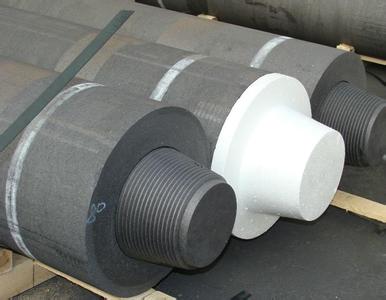

High-power graphite electrodes are a crucial component in the steelmaking, non-ferrous metal smelting, and silicon smelting industries. These electrodes are used in electric arc furnaces (EAFs) and ladle refining furnaces (LFs) for steelmaking, as well as for aluminum, copper, and magnesium smelting. The performance of high-power graphite electrodes is essential in determining the efficiency and quality of the smelting process. In recent years, the demand for high-power graphite electrodes has increased significantly, particularly for 700 high-power graphite electrodes.
Development of 700 High-Power Graphite Electrodes
The production process of 700 high-power graphite electrodes is similar to that of other high-power graphite electrodes, including:
Raw Material Preparation: The raw materials used in the production of high-power graphite electrodes must be of high purity, have high crystallinity, and have uniform particle size. This ensures that the electrodes have good conductivity and heat resistance during use.
Graphite Processing: Raw materials undergo processing steps, including grinding, mixing, and extrusion. These steps create a uniform mixture of raw materials and provide the graphite materials with certain strength and density.
Shaping: Processed graphite materials are shaped using methods such as pressing, extruding, molding, and injection molding. Shaping ensures that graphite materials can form electrodes of specific shapes and sizes.
Drying: Shaped electrodes are dried, which removes moisture and volatile substances within the electrodes, and enhances their stability and heat resistance.
Sintering: Dried electrodes are sintered in a high-temperature and high-pressure environment, causing changes in the internal structure, and improving their conductivity and heat resistance.
Machining: Sintered electrodes are machined using methods such as milling, cutting, and drilling to meet different application requirements.
Testing: The final step is testing, which ensures that the quality of the electrodes meets the required standards.
The production of 700 high-power graphite electrodes requires strict quality control from raw material preparation to testing. The raw materials used in the production of 700 high-power graphite electrodes have higher purity and higher crystallinity than those used in the production of other high-power graphite electrodes. This ensures that 700 high-power graphite electrodes have higher thermal conductivity, electrical conductivity, and better thermal shock resistance.
Applications of 700 High-Power Graphite Electrodes
700 high-power graphite electrodes are widely used in steelmaking, particularly in electric arc furnaces (EAFs) for steelmaking. Compared to conventional graphite electrodes, 700 high-power graphite electrodes have a higher current-carrying capacity, better thermal shock resistance, and can withstand higher temperatures. These advantages contribute to improved efficiency in steelmaking, reducing production costs.
In the non-ferrous metal industry, 700 high-power graphite electrodes are used for aluminum smelting, copper smelting, and magnesium smelting. The electrodes' high thermal conductivity, electrical conductivity, and excellent thermal shock resistance make them ideal for these processes.
Conclusion
700P high-power graphite electrodes play a vital role in the steel and non-ferrous metal industries, ensuring high efficiency and quality in smelting processes. The production process of 700 high-power graphite electrodes requires strict quality control from raw material preparation to testing. The demand for 700 high-power graphite electrodes is growing due to their advantages over conventional graphite electrodes, including higher current-carrying capacity, better thermal shock resistance, and improved efficiency.
